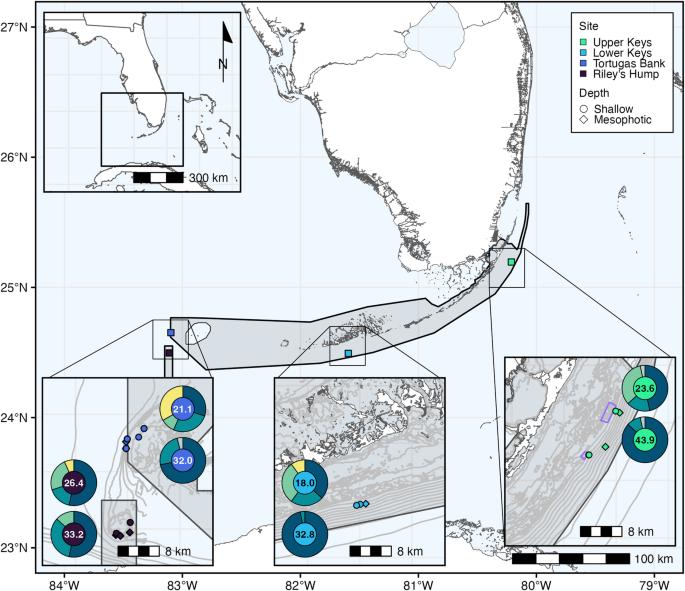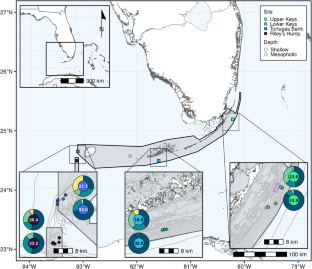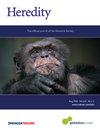Cryptic diversity of shallow and mesophotic Stephanocoenia intersepta corals across Florida Keys National Marine Sanctuary
IF 3.9
2区 生物学
Q2 ECOLOGY
引用次数: 0
Abstract
Population genetic analyses can provide useful data on species’ regional connectivity and diversity which can inform conservation and restoration efforts. In this study, we quantified the genetic connectivity and diversity of Stephanocoenia intersepta corals from shallow (<30 m) to mesophotic (30–45 m) depths across Florida Keys National Marine Sanctuary. We generated single nucleotide polymorphism (SNP) markers to identify genetic structuring of shallow and mesophotic S. intersepta corals. We uncovered four distinct, cryptic genetic lineages with varying levels of depth-specificity. Shallow-specific lineages exhibited lower heterozygosity and higher inbreeding relative to depth-generalist lineages found across both shallow and mesophotic reefs. Estimation of recent genetic migration rates demonstrated that mesophotic sites are more prolific sources than shallow sites, particularly in the Lower Keys and Upper Keys. Additionally, we compared endosymbiotic Symbiodiniaceae among sampled S. intersepta using the ITS2 region and SymPortal analysis framework, identifying symbionts from the genera Symbiodinium, Breviolum, and Cladocopium. Symbiodiniaceae varied significantly across depth and location and exhibited significant, but weak correlation with host lineage and genotype. Together, these data demonstrate that despite population genetic structuring across depth, some mesophotic populations may provide refuge for shallow populations moving forward and remain important contributors to the overall genetic diversity of this species throughout the region. This study highlights the importance of including mesophotic as well as shallow corals in population genetic assessments and informs future science-based management, conservation, and restoration efforts within Florida Keys National Marine Sanctuary.


佛罗里达礁岛群国家海洋保护区浅海和中海 Stephanocoenia intersepta 珊瑚的隐秘多样性。
种群遗传分析可以提供有关物种区域连通性和多样性的有用数据,为保护和恢复工作提供信息。在这项研究中,我们量化了浅海海域和深海海域的 Stephanocoenia intersepta 珊瑚的遗传连通性和多样性。
本文章由计算机程序翻译,如有差异,请以英文原文为准。
求助全文
约1分钟内获得全文
求助全文
来源期刊

Heredity
生物-进化生物学
CiteScore
7.50
自引率
2.60%
发文量
84
审稿时长
4-8 weeks
期刊介绍:
Heredity is the official journal of the Genetics Society. It covers a broad range of topics within the field of genetics and therefore papers must address conceptual or applied issues of interest to the journal''s wide readership
 求助内容:
求助内容: 应助结果提醒方式:
应助结果提醒方式:


